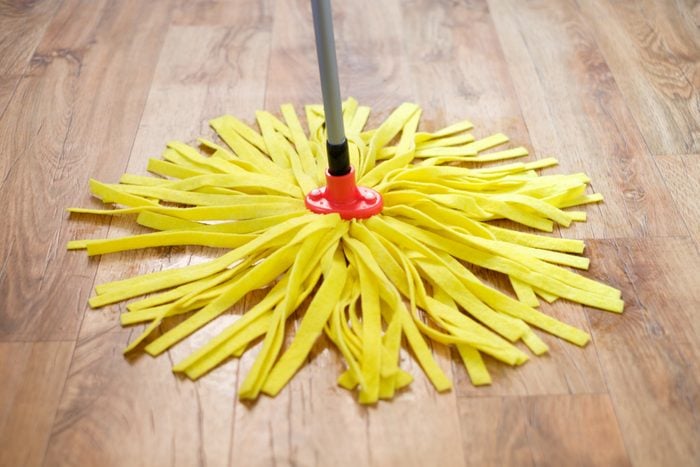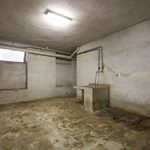How Often To Mop Wood Floors Safely and Effectively

Hardwood floors looking a little worse for wear? Mop them! Two experts explain how — and how often — to mop your hardwood floors.
Our editors and experts handpick every product we feature. We may earn a commission from your purchases.
Gleaming, polished oak floors give a home a clubby vibe, while white-pine planks evoke sun-kissed cheeks and sandy swimsuits. Whatever style wood floor you have, it’s important to keep it clean. But how?
You probably sweep, but are you apprehensive about going further? Can you actually mop wood floors?
There’s also the question of whether your wood floors are actually made of wood, or if they’re really good imposters. Engineered wood, with a hardwood veneer over sturdy plywood, and solid hardwood have different cleaning requirements than laminate and vinyl flooring. The latter products often mimic the look of wood so well it’s hard to tell.
We asked two professional cleaners with decades of experience what they reach for when cleaning hardwood or engineered wood floors.
On This Page
Can You Mop Wood Floors?
“Yes, you can absolutely mop hardwood floors,” says Dan Deonarain, owner of Galaxy Maids, a residential and commercial cleaning company that services the New York City and Boston areas. However, it should not be your default option for everyday dust and dirt. That honor goes to your broom and vacuum cleaner.
Johnny Pallares, owner of De La Rosa House Cleaning in Phoenix, Arizona, also recommends mopping wood floors, but don’t haul out the bucket and hot water just yet. Mopping wood floors isn’t the same as mopping tile or laminate flooring. Heavy-duty cleaners that break up grease in your kitchen might not be suitable for your wood floors, so use caution.
Consult the flooring manufacturer for mopping recommendations. “They’ll provide very specific care instructions and products, along with the frequency of use,” Deonarain says.
Mopping Hardwood Floors: Pro Tips
Both experts say you should use as little water as possible. Pallares says water tends to pool on hardwood floors, leading to water stains and other damage. “Water, over time, can get into the wood and cause warping,” Deonarain says. You could be looking at mold growth, too.
Also, beware of products that promise a heavy shine. “[T]hey tend to look great right after cleaning, but can cloud up after you start walking on the floor,” Deonarain says. And avoid overly aggressive cleaners, particularly anything acidic. “These will permanently damage your floor, and make it more susceptible to water damage,” Deonarain says.
Now you know what not to use. But what should you use?
Pallares suggests Bona Hardwood Floor Cleaner, which comes ready to use and doesn’t leave any residue, so there’s no rinsing. Just spray it on and rub into the wood. Bona also makes a spray-mop applicator for wood floors.
Pallares loves Murphy’s Oil Soap concentrate, too. “Murphy’s Oil Soap Wood Cleaner is great for floors, and helps condition the wood,” he says.
How Often Should You Mop Wood Floors?
Depending on traffic, Deonarain says mop kitchens and entryways weekly, and living rooms and dining rooms every other week. Bedrooms and home offices probably only need once a month, he says. This assumes you’re sweeping and vacuuming regularly, so keep up with those tasks in between mopping.
Pallares prefers mopping all hardwood floors — with an appropriate cleaner only — once a week. Whatever schedule you choose, make it your own by tailoring to your individual traffic and grime levels.
How To Care for Wood Floors Between Mopping
Once you’ve got your hardwood or engineered wood floor mopped and looking great, keep it that way!
Besides sweeping and vacuuming regularly, Deonarain shares these tips to protect your wood floor and maintain that just-mopped look:
- Place rugs in entryways and under furniture to reduce wear and tear.
- Use cushioned pads or furniture leg covers to prevent scuff marks.
- Disguise scratches with a liquid concealer.
- Polish occasionally with wood polish to restore your floor’s shine.
Pro tip: Before applying polishes, waxes and concealers, test a small, inconspicuous area to verify the color match and any adverse effects.



